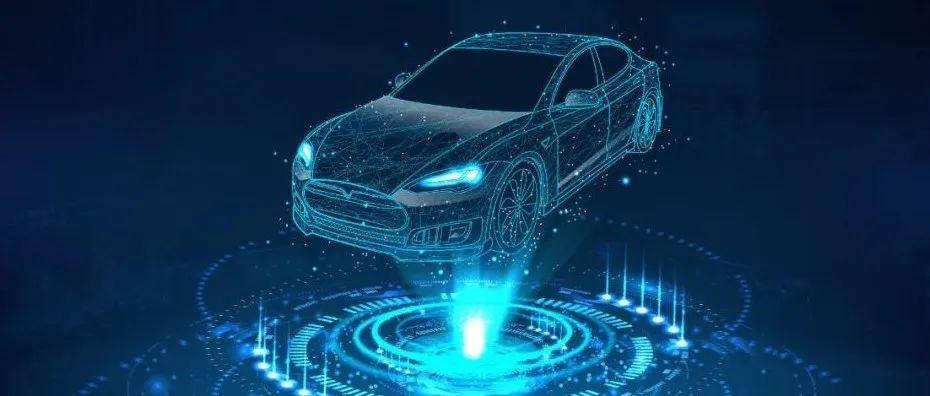What is the 800V System in New Energy Vehicles?
By Special Contributor/ Chen Huizhi (industry veteran)
Editor/ Quattro Daily
Editor’s Note: “New Variables” is a column from Quattro Daily that shares insights from frontline professionals about intelligent vehicles, presenting readers with a more comprehensive understanding of the key variables for the development of intelligent vehicles.
When it comes to 800V, current automakers primarily promote the “800V fast charging platform”, and consumers subconsciously think that 800V is just a fast charging system.
In reality, this understanding is somewhat deviated. Accurately speaking, the 800V high-voltage fast charging is just one of the feature functions of the 800V system.
In this article, I plan to systematically demonstrate to readers a more complete 800V system from five dimensions, including:
- What is the 800V system in new energy vehicles?
- Why is 800V introduced currently?
- What are the direct benefits of the 800V system?
- What are the current challenges for applying the 800V system?
- What might the future charging layout look like?
What is the 800V System in New Energy Vehicles?
The high voltage system includes all high voltage components on the high voltage platform. The following image is a typical high-voltage component of a new pure electric vehicle equipped with the water-cooling 400V voltage platform battery pack.

The voltage platform of the high voltage system comes from the output voltage of the vehicle’s power battery pack.
The specific voltage platform range for different pure electric vehicle models and the number of battery pack series connections by each automaker is related to the category of single cell (ternary, lithium iron phosphate, etc.).
Among them, about 100 series connections of ternary battery cell is around 400V of high voltage.
The commonly used term for the 400V voltage platform is a generalization. For example, for the 400V platform, the Range Rover Sport P400e utilizes ternary lithium-ion battery technology in which the voltage differs by around 100V from 100% state of charge to 0% state of charge (approximately 350V-450V).
Under the current 400V high voltage platform, all the parts and components of the high voltage system work under the 400V voltage level and are designed, developed, and verified based on the 400V voltage level.
To achieve the full 800V high voltage platform system, first of all, an 800V battery pack needs to be used to match with around 200 series connections of ternary lithium battery cells.The motors, air conditioning, charging units, DCDC converters, and other components in the high-voltage circuitry such as high-voltage connectors are designed, developed, and validated to meet the 800V requirements.
During the development of the 800V platform architecture, in order to be compatible with the 500V/750V fast charging stations available on the market, 800V pure electric vehicles will be equipped with a 400V to 800V boost DCDC module for a considerable period of time. The function of this module is to activate the boost module for charging the 800V battery pack depending on the voltage capability of the charging station.
There are two categories of designs regarding cost-effectiveness:
The first category is the “all 800V platform architecture.” In this design, all vehicle parts are designed for 800V.

The second category is the “high cost-effectiveness partial 800V platform architecture.”
“Partial components are reserved at 400V”: due to the fact that the cost of 800V power switch devices is several times that of 400V level IGBTs, in order to achieve balance between vehicle cost and driving efficiency, OEMs may use 800V parts (such as motors) in the necessary driving systems, while retaining some 400V parts (such as air conditioning and DCDC).
“Reuse motor power components”: since driving is not required during charging, cost-sensitive OEMs may reuse power components in the rear-motor drive controller for the 400V-800 boost DCDC.

“Why are 800V systems being introduced in new energy vehicles?”
Currently, about 80% of the daily driving range of pure EVs is consumed by driving motors. The inverter, also known as the motor controller, is one of the essential components in electric vehicles.
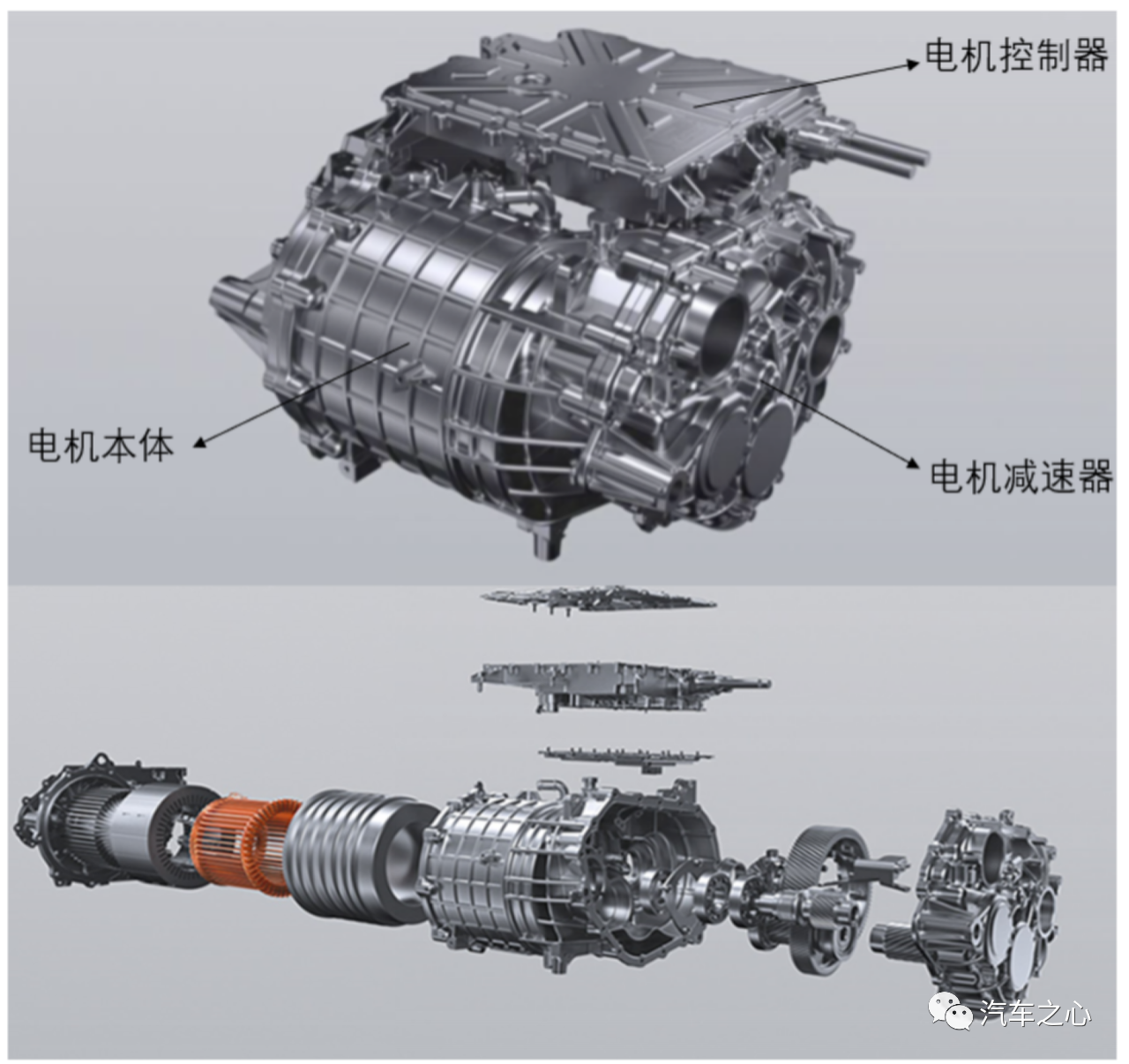
During the Si IGBT era, the efficiency gains of 800V high-voltage platforms were minimal, and the power gain was insufficient. The efficiency loss of the motor drive system is mainly composed of motor body loss and inverter loss:
The first loss is the “motor body loss”:
-Copper loss: the heat generated by the stator windings (copper wire) of the motor.- Iron loss is the heat loss (Joule heat) generated in the part of the iron (or aluminum) in the motor due to eddy currents caused by changes in magnetic force in the system using magnetic force in motor operation;
- Stray losses are attributed to losses caused by irregular flow of electricity;
- Windage losses.
For a certain type of 400V flat wire motor, the maximum efficiency can reach 97%, while the Weirui motor body with 400V pole krypton 001 is claimed to have a maximum efficiency of 98%.
At the highest efficiency of 97-98% in the 400V stage, using only an 800V platform would have limited space for reducing motor body losses.

The second part of the loss: motor inverter losses:
- Conduction loss;
- Switching loss.
Below is the efficiency map of Honda’s 400V platform IGBT motor inverter [1]. The proportion of high-efficiency areas above 95% is close to 50%.

Comparing the current situation of the two parts of the loss:
In a rough comparison of motor body losses (>2%) and motor inverter losses (>4%), the inverter losses relatively outweigh the former.
Therefore, the driving range of electric vehicles is more related to the efficiency of the main inverter of the motor.
Before the maturity of third-generation power semiconductors SiC MOSFETs, new energy vehicles used Si IGBTs as switch elements for inverters in power components such as drive motors, with the main supporting voltage level being around 650V, and higher voltage-level IGBTs mainly used in non-consumer fields such as the power grid and electric locomotives.
From a feasibility perspective, new energy passenger cars can theoretically use 1200V withstand voltage-level IGBTs as power switches for 800V motor controllers, and develop 800V systems in the IGBT era.
From a cost-effectiveness perspective, the 800V voltage platform has limited improvement in motor body efficiency, and the continued use of 1200V IGBTs provides no improvement to the motor inverter efficiency was which leads to a series of rising development costs. Most automakers did not use 800V platforms in the IGBT era.
In the SiC MOSFET era, due to the emergence of critical components, the performance of the 800V system is beginning to be perfected.
After the third-generation semiconductor material silicon carbide power devices were introduced, they received widespread attention [2]. Combining the advantages of high-frequency Si MOSFET and high-voltage Si IGBT:
- High operating frequency – up to the MHz level, with higher modulation flexibility.- Good withstand voltage performance – up to 3000 kV, widely used in various scenarios.
- Good high-temperature performance – can operate stably at high temperatures up to 200℃.
- Small integrated volume – the higher working temperature reduces the volume and weight of the heat sink.
- High operating efficiency – By using SiC power devices, the efficiency of power components such as motor inverters is improved due to the reduction of losses. Taking the Smart Elf as an example, under the same voltage platform and similar road resistance conditions, with almost no difference in weight, shape or tire width, where both motors are Weir and the inverter uses SiC compared to IGBT, the comprehensive efficiency is increased by about 3%.
Note: The actual improvement of inverter efficiency is also related to the hardware design and software development capabilities of each company.

In the early days, SiC products were limited by the SiC wafer growth process and chip processing capabilities. The single-chip current-carrying capacity of SiC MOSFET was much lower than that of Si IGBT.
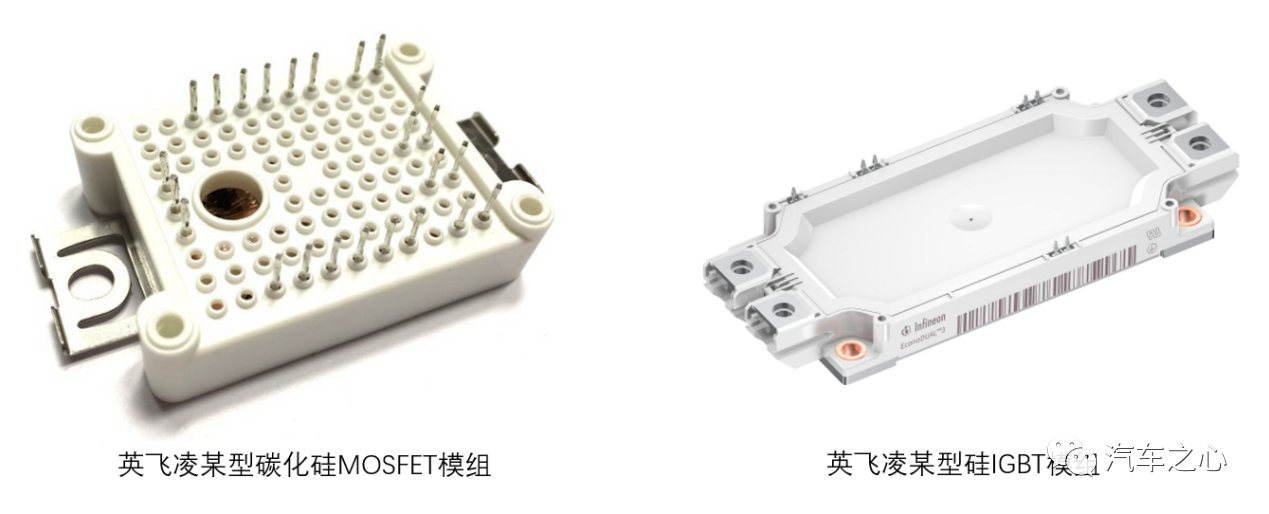
In 2016, a Japanese research team announced the successful development of a high-power-density inverter using SiC devices, and the results were published in the IEEJ. At that time, the maximum output power of the inverter was 35 kW.
In 2021, with the annual advancement in technology, the current carrying capacity of the SiC MOSFET with a voltage withstand of 1200V has improved, and products that can be adapted to more than 200 kW of power have been seen.

At this stage, this technology has begun to be applied in actual vehicles.
On the one hand, the performance of power electronic devices tends towards idealization. SiC power devices have higher efficiency than IGBT and can match the voltage withstand capability (1200V) of the 800V platform. In recent years, the power capacity of SiC power devices has developed to over 200kW.
On the other hand, the benefits of the 800V high-voltage platform are apparent. Doubling the voltage brings higher maximum charging power for the whole vehicle, lower system copper loss, and higher power density of motor inverters (that is, the same size motor has higher torque and power).## The third is the increasing competition in the new energy market. Consumers pursue higher mileage and faster recharging speeds, while enterprises urgently hope that the new energy market can create differentiation in powertrains.
These factors have ultimately led to the large-scale exploration and application of 800V high-voltage platforms for new energy vehicles in the past two years. Currently, there are several 800V platform models on the market, such as the Xpeng G9 and Porsche Taycan.
In addition, car manufacturers such as SAIC, Xpeng, Lotus, NIO, and Skywell are also preparing to release related 800V models.
What are the direct benefits of the 800V system?
There are many theoretical advantages of the 800V system, but in my opinion, the two most direct benefits for consumers are as follows:
- Longer and more practical mileage, which is the most immediate benefit.
On the basis of CLTC mode power consumption, the 800V system brings a conservative estimate of a 5% increase in efficiency (as shown in the picture below, comparing Xpeng G9 to BMW iX3).

It is said that the benefits of the 800V system are even more significant under high-speed conditions. During the launch of Xpeng G9, the manufacturer deliberately guided the media to conduct high-speed mileage tests. Multiple media outlets reported that the high-speed mileage success rate (high-speed mileage/CLTC mileage*100%) of Xpeng G9 with 800V system was relatively high. The actual energy-saving effect needs further confirmation in the market.
- Fully utilize the capability of existing charging stations.
For 400V platform models, the charging speed is almost the same when facing 120kW or 180kW charging stations. However, 800V platform models can make use of DC boosting modules to allow the existing low-voltage (200kW/750V/250A) charging stations without power grid limitations to reach the maximum power of 750V/250A.
(Test data from DCD)
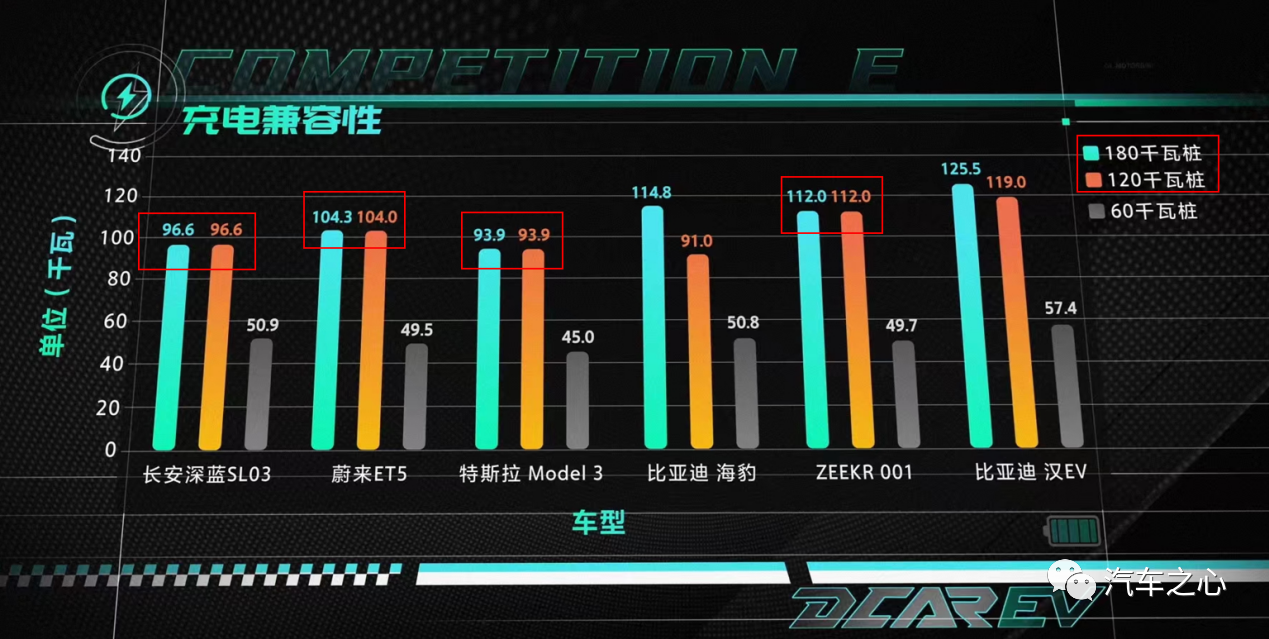
Note: The actual maximum voltage of Xpeng G9 is less than 800V due to engineering considerations.
Taking an example charging station as an example, the charging power of Xpeng G9 (800V platform) with the same battery capacity of around 100 kWh is nearly double that of Chery’s EXEED001 (400V platform).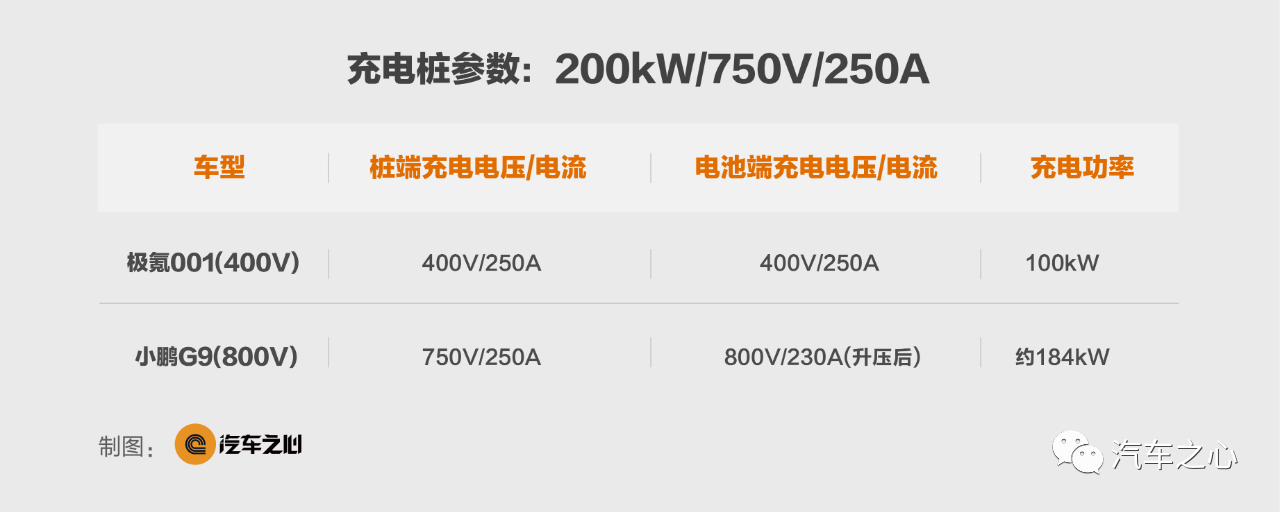
What are the current challenges of the 800V system application?
The biggest challenge for 800V application still lies in cost, including component cost and development cost.
Firstly, let’s talk about component cost.
The high-voltage power device is expensive and in large quantity. In the full 800V architecture, over 30 high-voltage power devices with a withstand voltage of 1200V are used, and at least 12 SiC devices are used in dual-motor vehicles.
As of September 2021, the retail price of a 100-A discrete SiC MOSFET (650 V and 1,200 V) is nearly 3 times the equivalent Si IGBT price. [4]
As of October 11, 2022, I have learned that there is about a 2.5 times price difference between Infineon’s two IGBTs and SiC MOSFETs with similar performance specifications. (data source: Infineon’s official website on October 11, 2022)

Based on the above two sources, it can be basically assumed that the current market price difference between SiC and IGBT is about 3 times.
Secondly, development cost is also a challenge.
As most of the 800V parts need to be redesigned and validated, the testing volume is larger compared to small-iteration products.
Some of the testing equipment in the 400V era will not be applicable to 800V products, and new testing equipment needs to be purchased.
Early adopters of new 800V products, typically automakers, usually need to share more testing and development costs with their component suppliers.
At this stage, automakers, for caution, will choose 800V products from established suppliers, whose development costs will be relatively higher.
According to a certain automaker’s engineer’s estimate in 2021, upgrading from 400V to 800V system on a dual-motor 400 kW all-electric vehicle using a full 800V architecture will increase cost by approximately 10,000-20,000 yuan.
Thirdly, the low cost-effectiveness of the 800V system is also a challenge.Example of using home charging piles for pure EV customers, assuming a charging cost of 0.5 CNY/kWh and an electricity consumption of 20 kWh/100 km (typical for high-speed cruising of medium and large EV models). The increased cost of the 800V system is enough to support the customer driving 100,000-200,000 km. However, the energy savings from efficiency improvements (estimated to be 3-5% based on high-voltage platforms and SiC) during the vehicle’s lifetime cannot cover the increase in vehicle cost. Additionally, the 800V model has market limitations.
From an economic perspective, the advantages of the 800V platform are not significant, making it suitable for high-performance B+/C-class car models that prioritize vehicle performance and are less sensitive to individual vehicle costs. However, this type of car has a relatively small market share.
According to data from the China Association of Automobile Manufacturers, new energy vehicles priced between 200,000 and 400,000 CNY comprised 22% of sales from January to August 2022, while those priced between 300,000 and 400,000 CNY made up 16% of sales, and those priced over 400,000 CNY made up 4% of sales.
Assuming a vehicle price threshold of 300,000 CNY and no substantial decrease in the cost of 800V components, 800V models can occupy approximately 20% of the market share.
Fourth, the 800V component supply chain is immature. The application of the 800V system requires the redevelopment of existing high-voltage circuit parts. While most Tier 1 and Tier 2 suppliers are still in the development stage with limited mass production experience, supply is limited to host automakers, and relatively mature products are susceptible to capacity issues due to unexpected factors.
Fifth, the 800V component market lacks validation. The 800V system uses many newly developed products, such as electric motors, inverters, batteries, chargers, DCDC converters, high-voltage connectors, and high-voltage air conditioning systems, which require verification of electrical clearances, creeping distances, insulation, EMC, and heat dissipation.
In the current Chinese market, product development and validation cycles are short, usually less than three years, and even shorter for new projects developed by established joint ventures. As a result, there is not enough time for the 800V products to undergo real-market validation, leading to a relatively high probability of after-sales issues.
Finally, the practical value of the 800V system’s fast charging capability is not high. When car companies advertise 250 kW and 480 kW (800V) high-power super fast charging, they often claim to have installed charging stations in many cities, leading consumers to believe that they can enjoy this experience at any time after purchasing the car. However, this is not entirely accurate.
There are three main factors that limit the practicality of fast charging: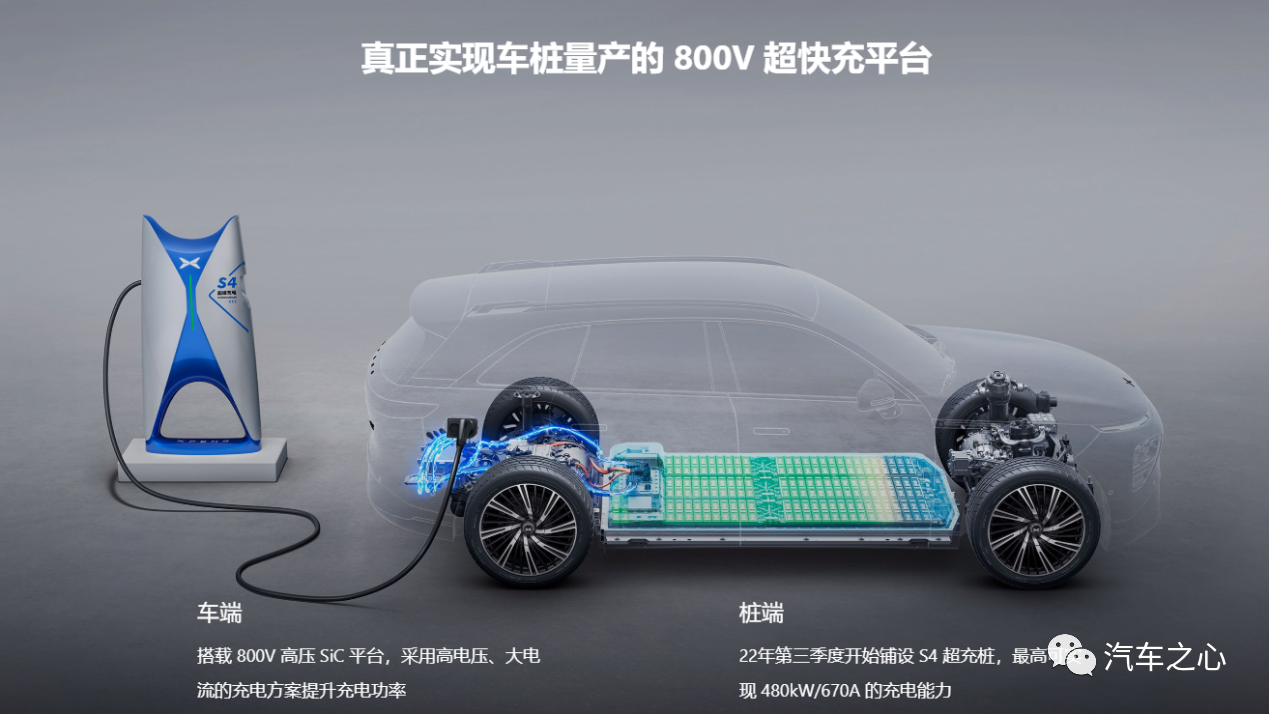
(1)The number of 800V charging piles needs to be increased.
Currently, the maximum voltage supported by the commonly used DC charging pile in the market is only up to 500V/750V, with a limited current of 250A, which cannot fully unleash the fast charging capacity of the 800V system (300-400kW).
(2)The maximum power of 800V supercharging piles has constraints.
Taking the Xpeng S4 supercharging pile (high-voltage liquid-cooled) as an example, the highest charging capacity is 480kW/670A. Due to the limitation of the power grid capacity, the demonstration station can only support the highest charging power of 800V models for single-vehicle charging. During peak periods when multiple vehicles are being charged simultaneously, power sharing will occur.
According to power supply professionals, a 600kVA capacity is requested by schools on the eastern coast with more than 3,000 students. Based on 80% efficiency, it can support an 800V supercharging pile with a power of about 480kW.
(3)The investment cost of 800V supercharging piles is high.
This involves transformers, piles, energy storage, etc., and the actual cost is estimated to be higher than that of battery swap stations. The possibility of large-scale deployment is relatively low.
800V supercharging can only provide additional convenience, so what kind of charging facilities layout can improve the charging experience?
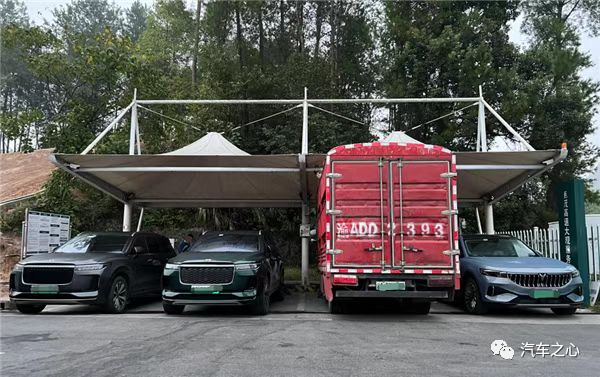
Imagining the Future Charging Facility Layout
Currently, the proportion of car-to-pile (including public and private piles) is still roughly at a ratio of 3:1 (based on 2021 statistics) in the entire domestic charging pile infrastructure.
With the increase in sales of new energy vehicles, consumers’ charging concerns need to be relieved, and it is necessary to improve the ratio of car-to-pile. Reasonable layout of various types of fast and slow charging piles in destination scenes and rapid energy replenishment scenes can improve the charging experience and truly balance the load of the power grid.
Firstly, there is destination charging, where charging does not require additional waiting time:
(1) Community parking spaces: A large number of orderly slow charging piles under 7kW are built, and non-new energy vehicle spaces are prioritized for fuel vehicles, which can meet the needs of residents and have relatively low installation costs. A controlled manner can also avoid exceeding the area grid capacity.
(2) Parking lots in shopping malls/scenic areas/industrial parks/office buildings/hotels, etc.: 20kW fast charging is served as a supplement, and a large number of 7kW slow charging piles are built. On the development end, the cost of slow charging piles is low, with no capacity expansion cost. On the consumption end, it can avoid the scenario where fast charging can occupy parking spaces or have vehicle moving operations after a short charging period.The next is fast charging. How to save overall charging time:
(1) Highway service areas: maintain the current number of fast charging stations, strictly limit the charging upper limit (e.g., peak 90%-85%), and ensure the charging speed for long-distance driving vehicles.
(2) Gas stations near major cities/towns near highway exits: equipped with high-power fast charging stations, strictly limit the charging upper limit (e.g., peak 90%-85%), as a supplement to highway service areas, catering to the needs of new energy users for long-distance driving, and also to meet the demand for ground charging in cities/towns.
Note: Ground gas stations are usually equipped with 250kVA of electrical capacity, which can approximately support two 100kW fast charging piles at the same time.
(3) City gas stations/outdoor parking lots: equipped with high-power fast charging stations, with a charging upper limit. Currently, Sinopec is laying out fast charging/ battery swapping facilities in the new energy field, and it is expected that there will be more gas stations with fast charging piles in the future.
Note: Gas stations/outdoor parking lots have prominent geographical locations and building features themselves, which facilitate charging customers to quickly find the piles and exit quickly.
Conclusion
The 800V system currently faces many challenges in terms of cost, technology, and infrastructure. These difficulties are the necessary steps for innovation and development of new energy vehicle technology and industrial iteration, and also a stage for engineers, investors, and policy makers to exert their energies.
Chinese automakers, with their fast and efficient engineering application capabilities, may achieve a large-scale and rapid application of the 800V system, leading the technological trend in the field of new energy vehicles.
Chinese consumers of this generation will also be the first to enjoy the high-quality vehicle experience brought by technological progress. No longer like in the era of fuel vehicles, Chinese consumers would buy old car models, old technologies, or technology-restrained products from multinational car companies.
References:
[1] Honda R&D: Development of Motor and PCU for a SPORT HYBRID i-MMD System
[2] Han Fen, Zhang Yanxiao, Stone Hao. Application of SiC MOSFET in Boost Circuit [J]. Industrial Instrumentation and Automation Devices, 2021 (000-006).
[3] Koji Yamaguchi, Kenshiro Katsura, Tatsuro Yamada, Yukihiko Sato. High Power Density SiC-Based Inverter with a Power Density of 70 kW/liter or 50 kW/kg [J]. IEEJ Journal of Industry Applications.[4] PGC Consultancy Article: Taking Stock of SiC, Part 1: a review of SiC cost competitiveness and a roadmap to lower costs
This article is a translation by ChatGPT of a Chinese report from 42HOW. If you have any questions about it, please email bd@42how.com.
